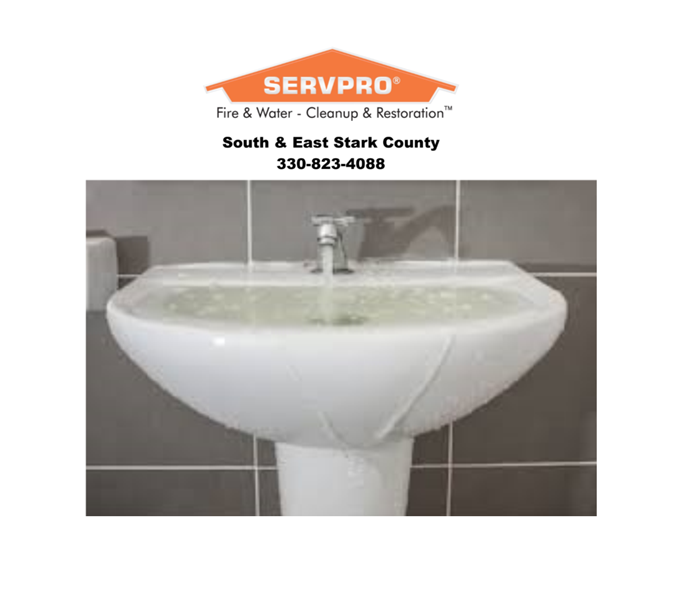Bathroom Water Damage Issues to Homes in Alliance, Ohio
10/29/2019 (Permalink)
Everything in the bathroom uses water, therefore there is a possibility of a water damage caused by an overflow of your sink, tub/shower or toilet. Also, the sealants around these areas can wear down, or the connections at the fixtures can break loose or water lines begin to leak. It is important to keep an eye on these areas. If not, mold and rot can begin and cause costly damage.
Knowing the signs of water damage and where it is most likely to occur can help you avoid the heartbreak and high costs of water damage repair and mold remediation.
Bathroom Toilet
- When your toilet overflows from clogging don’t continue to flush it thinking that the clog will dislodge the clog, but in could make is worse and cause the overflow of water. Turn the water off with the shutoff valve on the wall near the floor directly behind the toilet. It will stop any further overflow and keep the water damage from getting worse. Try to use a plunger to dislodge the clog or call a plumber.
- If the wax ring becomes soft and pliable between the toilet and the floor water can start to leak over time. You will notice a little bit of water at the base of the toilet if there is a problem with the wax ring. You may not see any water at all, if your toilet begins to wobble its most likely because the floor support is starting to rot away from the water leak that has occurred under the toilet.
Bathroom Sink
- Leaving your water running can cause a major water damage from water overflowing. It can cause damage to your cabinet, floor and walls and even travel to the room underneath.
- A slow drip from the waterline or the drain line beneath the bathroom sink can cause more damage if gone unnoticed. Mold can begin to grow under a sink due to the moisture and it being dark. You may need to use a flashlight to see if the slow drip has caused mold to grow.
Bathroom Tub/Shower
- Leaving your water running and unattended to fill your tub can cause it to overflow. Leaving a huge mess and major water damage to the contents in your bathroom and even floors underneath it.
- Unless your bathtub is a single-molded unit, there a good chance the caulk between the tub and the surround may fail one day causing water to leak. It can cause damage to the wood studs, drywall and other framing materials.
- The grout between the tiles and the base of your shower/tub can deteriorate and create cracks where water can pass through and into your walls. Check to make sure all corners are well caulked and that there are no cracks running through the middle of your shower pan area. If you find that you have major cracks there could be bigger problems that could be very expensive to fix if they persist.
Other than human error the most common bathroom water damage is deteriorating of the connection between the pipe and the supply line under the bathroom sinks or to the toilet. When this happens, water can go everywhere in quickly! To protect against this, regularly check the connections to make sure they are secure and, also make sure to check the supply lines are still in good condition.
If water damage occurs, call a local restoration company to help clean up and restore your bathroom. SERVPRO of South & East Stark County is available 24-hours a day for all emergency water disasters at 330-823-4088.






 24/7 Emergency Service
24/7 Emergency Service
